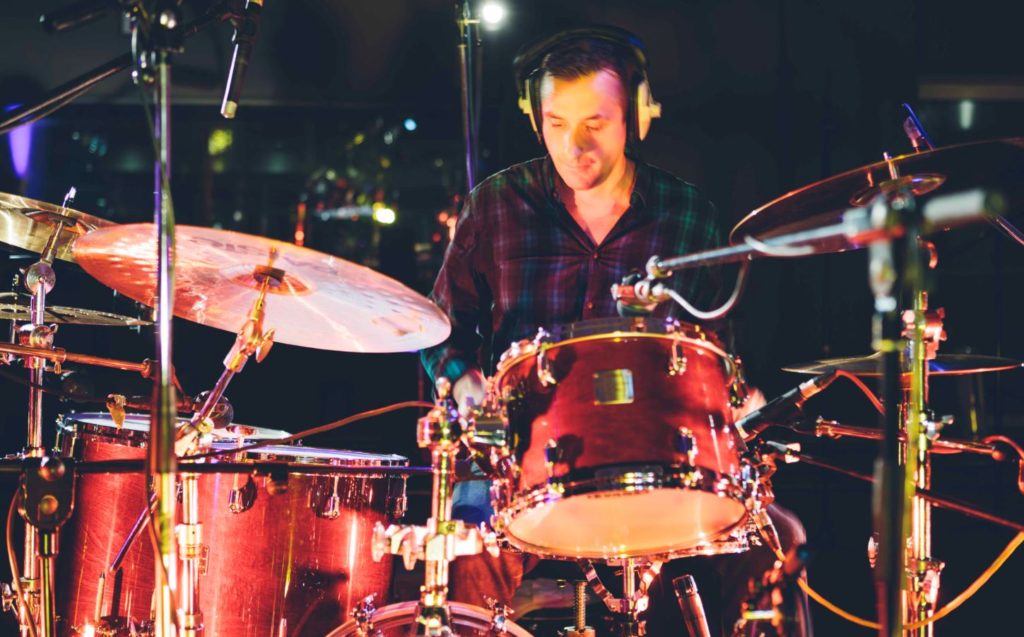
Welcome back fellow audio engineers and music enthusiasts! In Part 1 of our guide on how to mix drums we discussed grouping tracks, mixing the kick and snare drums. In Part 2 we’re going to look at adding in the toms, overheads, hi-hat and room mic.
So let’s get kicking and let the drums roll………
The Toms
Really top drummers are experts at tuning their toms and they can make them sound unreal for those critical tom rolls and drum fills. But even the best drummers with the nicest kits are probably still going to need to add a bit of EQ (equalisation – cutting or boosting different frequencies) to deliver a sound with real punch .
If they are a big feature of the drum track, you’ll have to listen carefully and make sure they cut through. Often some of the mid frequencies (250 – 750 kHz) can cause issues. Cut these out and then blend in the more powerful low end and high end frequencies to add great depth to the sound.
Toms by their nature tend to be quite a ringy drum – think about how tight a sound or how much of that natural ring you want featuring. You can use a compressor to help tackle this issue.
Compression can also add some serious effect to your tom mix and make them sound huge! You can have a bit of fun by blending in some reverb with the compression. If you’re using Protools the standard D-Verb can work quite well. But always remember to keep the best interest of the song in mind.
Learn More on How to Mic a Drumkit
Overhead Mics
Overheads are a sound engineers best friend! They pick up the whole kit and give a comprehensive overview of the sound coming from the drums.
Listen out for differences between close mics and the overheads – how do the snare or kick compare???
If you want to blend them into the mix early on it can help to sculp the close mic and overall sound of the drum track to the way you want it.
By adding in more of the overheads, you’ll get more of the room sound – so if there’s good acoustics this might be the way to go.
As far as EQ is concerned it’s probably best to leave it alone to start with and keep the sound fairly natural. You may want to take away some of the low end to clear the overheads up a little but do it gradually as you listen back.
Drums can be pretty loud – Learn how to Soundproof Your Home Studio and also remember to Protect Your Ears!
Adding the Hi-Hat
All of the mics can pick up unwanted spill from other drums and because the hi-hat is close to the snare, it is often picked up. Isolating particular top-end frequency ranges and boosting them helps tackle the issue of spill. Add in a high pass filter and see how far you can push it without taking away from the natural sound of the cymbals. Always trust your ears!
Room Microphones
Placing some room mics at different locations in the room can pic up some really interesting recordings and add extra colour to the track. Place them quite a distance away from the kit, don’t think of them as just additional overheads. They tend to capture nice reverbs – depending on the room itself they can be really good or really really bad!!! It’s a bit of a gamble but if you’ve got plenty of time and lots of free tracks give it a go!
One thing you could try for something different is to place a Shure SM57 3 or 4 feet back from the kit and point it in right towards the shells, about waist height. Maybe slightly off to the side in between the floor tom toward the snare. Then put a heavy compressor on it so it’s really crunchy and begins to distort. If you blend it carefully to the full mix it can sound very cool!
Final Thoughts
As we said at the beginning of Part 1 – mixing drums can be a tricky job but it’s a lot of fun. You can shape the sound of the kit using EQ and Compression and the more you practice the better you’ll get.
There’s no one right way to mix the kit so find the way that suits you as an audio engineer and that suits the music. As trends and changes happen in the industry, you’ll need to adapt to popular sounds or try to innovate and come up with a new sound – lead the way!
If you want to find out more about mixing drums take a look at our audio engineering courses or come down to an open day and have a chat with us here at the studio.
Happy Mixing!!
[openday]
FOLLOW US